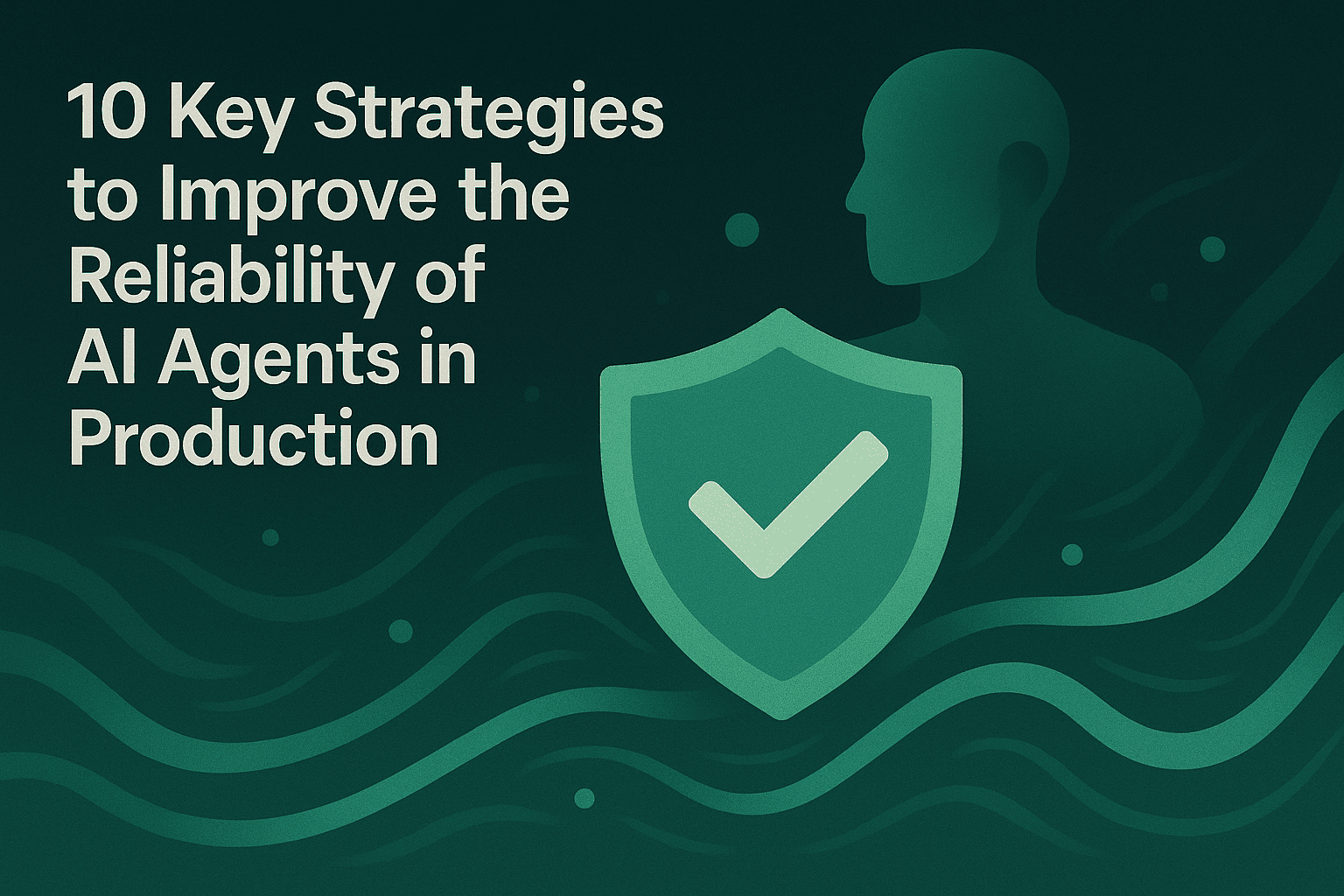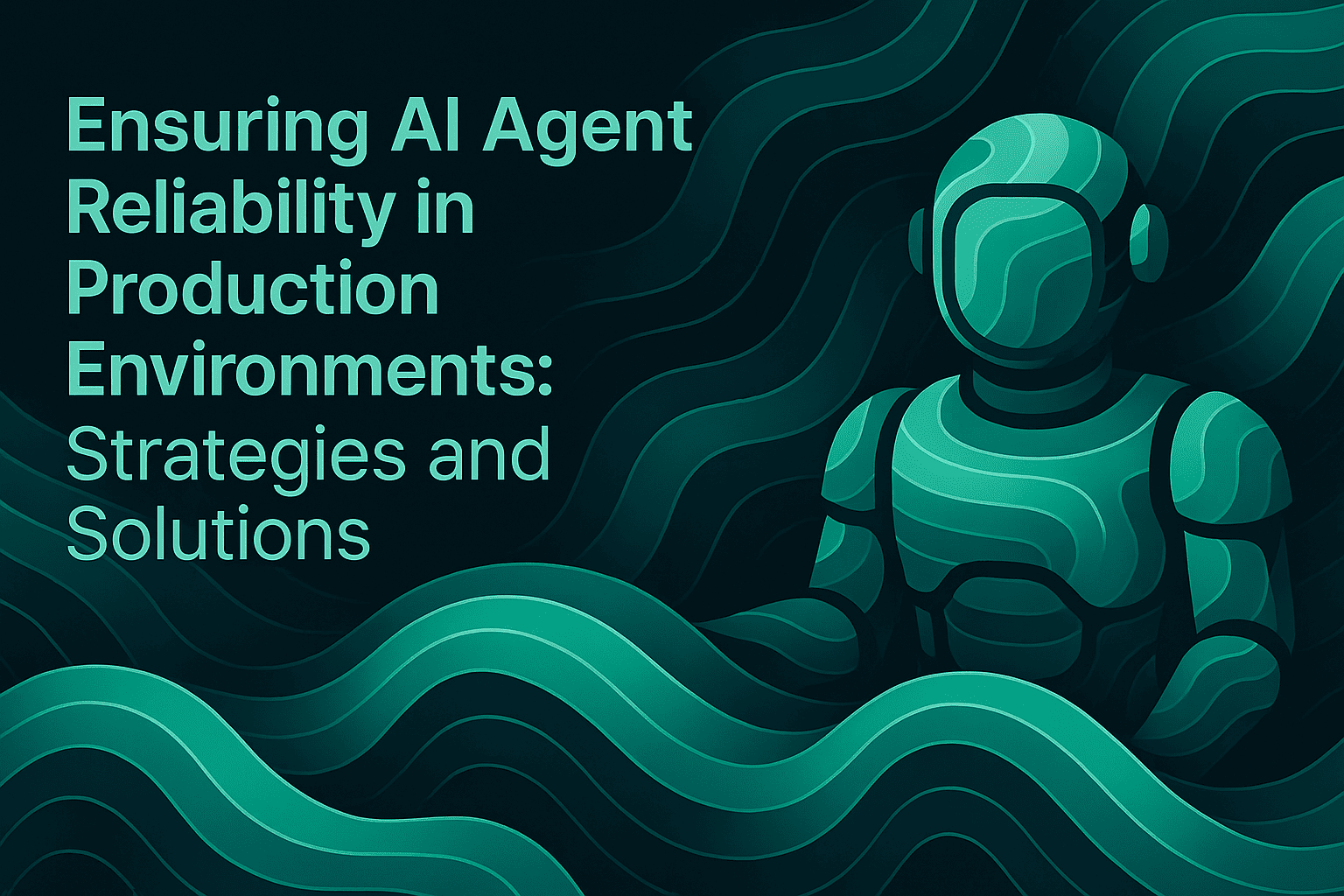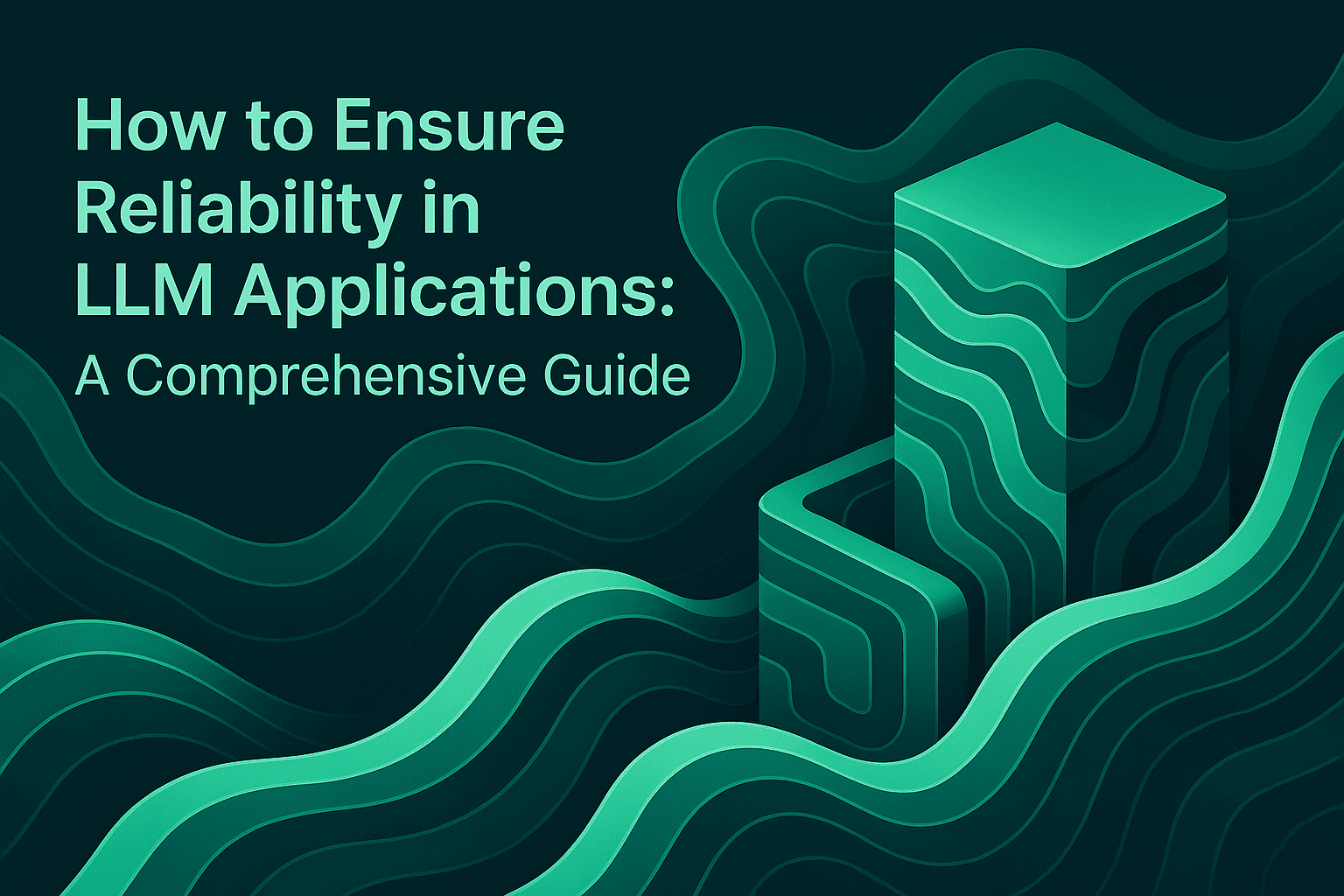AI Agent Reliability: The Playbook for Production-Ready Systems

Most AI agents are still fragile. If you’re building for real users, reliability is non-negotiable. We’ll cover evaluation, simulation, observability, iteration, and security, with clear metrics, examples to level up your stack.
TL;DR
- Reliability decides whether your agent survives real-world usage.
- Measure the practical stuff you can observe through Maxim: success signals from evals, tool call errors from traces, repeated-behavior patterns, and latency from dashboards.
- Simulate before you ship using Maxim’s scenario-based simulations, and after shipping, lean on traces, online evaluations, and alerts.
- Maxim AI gives you the evaluation, simulation, and observability stack to make this practical.
Why Reliability Is Non-Negotiable
Agents run workflows, call tools, and deal with user inputs; and when they fail, the fallout hits customers directly. So reliability becomes the baseline, not a “nice to have.” Maxim underlines this with its focus on evaluations, simulations, and continuous monitoring through traces and alerts.
From Demos to Production
Demo agents behave nicely because they live in controlled conditions. Production brings messy inputs, failing tools, bad parameters, and unpredictable model behavior. The fix is a disciplined lifecycle: define metrics, simulate edge cases, monitor everything, and ship with guardrails and rollout controls. See Evaluation Workflows for AI Agents for a step-by-step approach.
Key Metrics You Should Track
Track a small set of metrics that reflect user impact and engineering control. For more, read AI Agent Evaluation Metrics.
- Task success (via evaluators): Percent of sessions that meet the user goal.
- Tool call failures (via trace logs): Percent of tool calls that fail, split by external failure vs bad parameters.
- Step/workflow completion (via traces): Percent of planned steps that complete as intended.
- P50 and P95 Latency: End-to-end session latency. Track per tool and per step.
- Safety/policy checks: Frequency of policy, safety, or compliance triggers.
- Human-review escalations (via Last-mile features): Percent of sessions requiring handoff to a human or fallback mode.
- Regressions or drift (via alerts + online evals): Significant deltas in key metrics relative to recent baselines.
Add definitions to your internal runbook so every team uses the same language.
How the Best Teams Build Reliable Agents
1. Define What Good Looks Like
Set your expectations early and tie them to your evaluation suite. Example SLOs:
- Task success rate above 85% on the core path.
- Tool call error rate below 3%, with fewer than 1% due to bad parameters.
- P95 latency under 5 seconds for a single turn and under 20 seconds for a session.
- Loop containment rate at 99% or higher.
Use evaluation suites that reflect real tasks. Learn the difference between Agent Evaluation vs Model Evaluation and measure both.
2. Simulate Before You Ship
Run simulations that cover messy input patterns, failing tools, and edge-case behavior. Maxim supports AI-powered simulations and scenario testing at scale to stress-test prompts, workflows, and tool interactions.
Include:
- Fuzzy user intents and incomplete context.
- Conflicting tool outputs.
- Timeouts, rate limits, and partial data.
- Prompt injection attempts and jailbreak variants.
Use scenario packs across verticals. Run thousands of sessions to find weak spots in prompts, tool selection, and termination conditions. See Agent Simulation & Testing Made Simple with Maxim AI.
3. Monitor Everything After You Ship
Production needs deep visibility. You can drill into failures, compare patterns, and hook alerts to regressions. Dashboards help you track latency, error patterns, and segment performance. You should be able to answer:
- Why did the agent pick this tool?
- Which step failed and why?
- Was the failure external or due to bad parameters?
- How often does this pattern occur?
Set alerts for drift and reliability regressions. Split metrics by model version, prompt version, traffic segment, and geography.
For more, see LLM Observability: How to Monitor Large Language Models in Production and Agent Tracing for Debugging Multi-Agent AI Systems.
4. Iterate Relentlessly
You keep improving: update prompts, rerun evaluations, analyze regressions, and keep your datasets fresh. Prompt Management in 2025: How to Organize, Test, and Optimize Your AI Prompts shows you how to keep agents sharp.
5. Get Serious About Compliance and Security
If you’re handling sensitive data, you can’t cut corners. Make sure your agents are compliant with regulations, your data is secure, and your deployment is bulletproof. Maxim AI’s How to Ensure Reliability of AI Applications: Strategies, Metrics, and the Maxim Advantage covers the essentials.
Real Stories: Reliability in Action
Let’s talk cases, not hypotheticals. Clinc needed their conversational banking AI to work every time, no excuses. They used Maxim’s evaluation and monitoring to catch issues before customers ever noticed. Atomicwork scaled enterprise support with simulation and robust agent testing. These aren’t just nice stories—they’re proof that reliability pays off.
What’s Next: Autonomous Agents and the Multi-Agent Future
The next chapter? It’s not about single agents doing one job. It’s about swarms of agents working together, handling complex workflows, negotiating, and recovering from failures. This is where reliability moves from “important” to “absolutely critical.” If your agents can’t coordinate, self-correct, and maintain trust, your system falls apart.
Maxim AI is already building for this future. Our AI Agent Evaluation Metrics and simulation environments help teams prepare for the coming wave of autonomous, collaborative AI.
The Roadmap: How to Build for the Long Haul
Ready to stop playing in the early stages and start building agents that last? Here’s your roadmap:
- Set rock-solid evaluation metrics. Don’t trust your gut. Trust data. Here’s how.
- Simulate before you ship. Break your agents in the lab so users don’t break them in the wild. Simulation tips.
- Monitor everything. If you don’t know what’s happening, you’re already in trouble. Get observability now.
- Iterate like your job depends on it. Because it might. Prompt management best practices.
- Stay compliant, stay secure. Don’t end up in the news for the wrong reasons. Compliance essentials.
The Maxim AI Advantage: Why We’re Built for Reliability
Most platforms talk a big game about reliability. Maxim AI actually delivers. Here’s what you get:
- SOC 2 Type 2 compliance. Your data is safe.
- In-VPC deployment. No data leaves your environment.
- Deep integrations with OpenAI, Anthropic, LangChain, CrewAI, LiteLLM, etc.
- Battle-tested evaluation, simulation, and observability tools that actually work in production.
Want to see it in action? Book a demo


